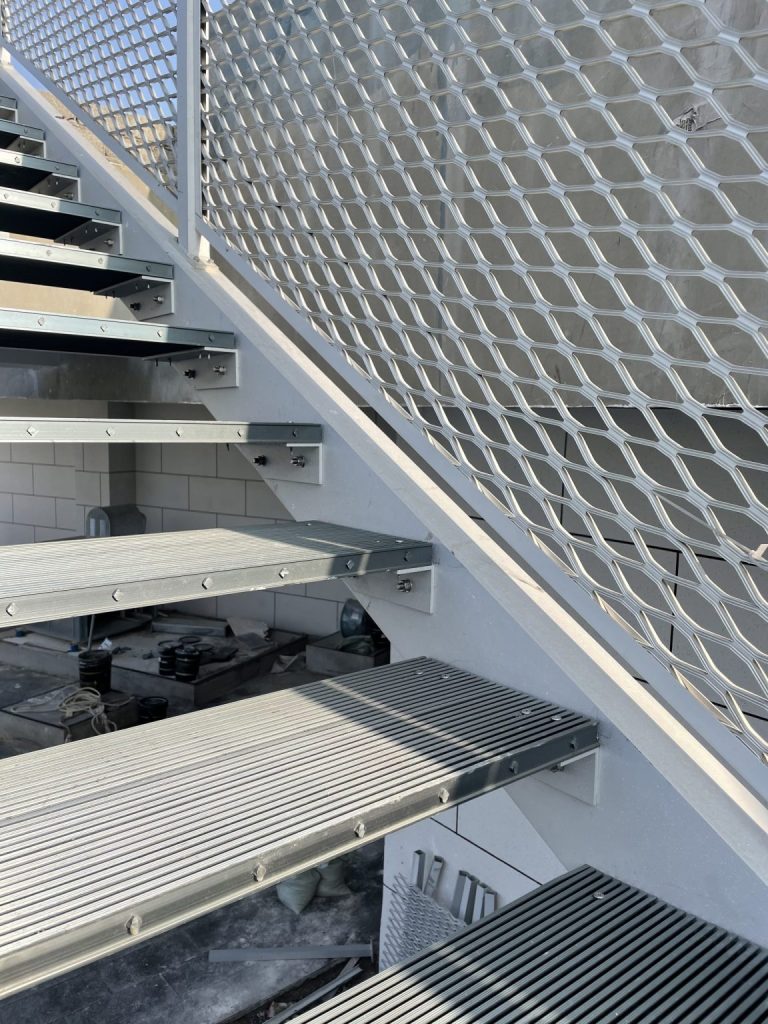Aluminum Grating: A Lightweight Solution for Cross-Industry Applications
As modern industries increasingly demand materials with superior performance, aluminum grating has emerged as a preferred choice in sectors such as construction, transportation, and energy due to its lightweight design, high strength, and corrosion resistance. Its modular design, adaptability, and eco-friendly properties allow it to meet functional requirements while balancing aesthetics and cost-effectiveness. This article explores the innovative applications of aluminum grating across diverse industries.
1. Architecture: The Fusion of Modern Aesthetics and Functionality
Aluminum grating is widely used in construction for its customizable designs and weather resistance.
- Facades and Exterior Cladding
By varying aperture sizes, colors, and patterns, aluminum grating creates dynamic light-shadow effects. For example, a Shanghai commercial complex uses wave-shaped aluminum grating to conceal pipelines while forming a striking visual identity. - Interior Ceilings and Partitions
Perforated aluminum grating ceilings in airports and exhibition halls hide ventilation systems while enhancing spatial openness. Its fire-resistant properties (meeting Class A fire standards) make it ideal for safety partitions. - Shading and Energy Efficiency
Paired with smart controls, adjustable aluminum grating systems reduce energy consumption. A green building in Dubai achieved a 15% cooling energy reduction using dynamic aluminum grating shades.

2. Industrial Sector: Enhancing Safety and Efficiency
In heavy industries like petrochemicals and power generation, aluminum grating ensures safety and durability.
- Platforms and Walkways
Unlike rust-prone steel, aluminum grating resists acids and alkalis (ideal for coastal or chemical plants) and weighs 1/3 as much, slashing transportation and installation costs. - Equipment Protection and Ventilation
Perforated aluminum grating covers machinery in power plants to block debris while enabling airflow for cooling. In a U.S. nuclear plant retrofit, aluminum grating outlasted steel by 8 years.
3. Transportation: Driving the Lightweight Revolution
From rail systems to aerospace, aluminum grating reduces weight and energy use.
- Subway Platforms and Train Interiors
London’s subway uses anodized aluminum grating for platforms, improving weather resistance by 50%. High-speed train interiors integrate micro-perforated grating panels for noise reduction and weight savings. - EV Battery Protection
Aluminum grating’s thermal conductivity optimizes battery cooling, while its impact resistance (withstanding 5-ton pressure in tests) ensures safety. Tesla has incorporated it into battery compartment designs.
4. Energy and Sustainability: A Green Material for the Future
- Solar Mounting Systems
Aluminum grating supports adapt to rugged terrains and resist salt corrosion. Studies show its use in solar farms reduces lifecycle carbon emissions by 40% compared to steel. - Wastewater Treatment Screens
Coated aluminum grating filters in treatment plants withstand hydrogen sulfide corrosion, lasting 3x longer than traditional materials.
5. Emerging Applications: Innovating Beyond Boundaries
- Agricultural Greenhouses
A Dutch vertical farm uses aluminum grating frames with smart lighting for precision crop control. - Art Installations and Urban Design
Artists leverage aluminum grating’s flexibility for kinetic sculptures, such as Wind Traces at Milan Design Week 2023, where moving grating panels create light-shadow art.
Future Trends: Smart and Sustainable Evolution
Advances in surface treatments (e.g., nano-coatings, self-cleaning) and smart manufacturing will drive multifunctional integration. For instance, sensor-embedded aluminum grating could monitor structural health, while 95%-recyclable production models align with circular economy goals.
Conclusion
From traditional industries to cutting-edge innovations, aluminum grating continues to redefine its role. Under global “dual-carbon” goals (peaking emissions and achieving neutrality), it is poised to catalyze cross-sector advancements and sustainable development.

